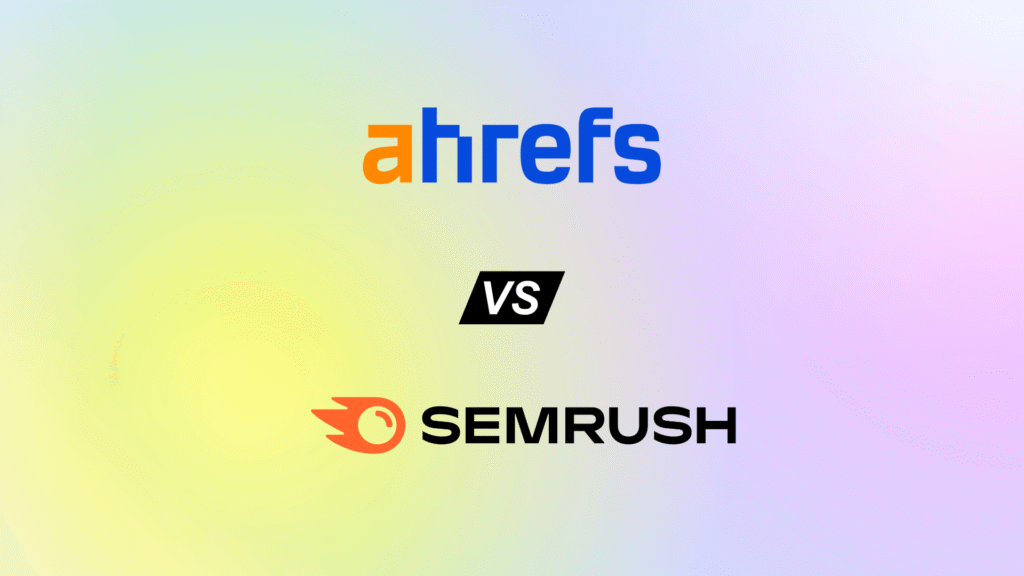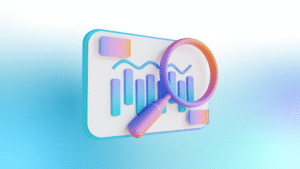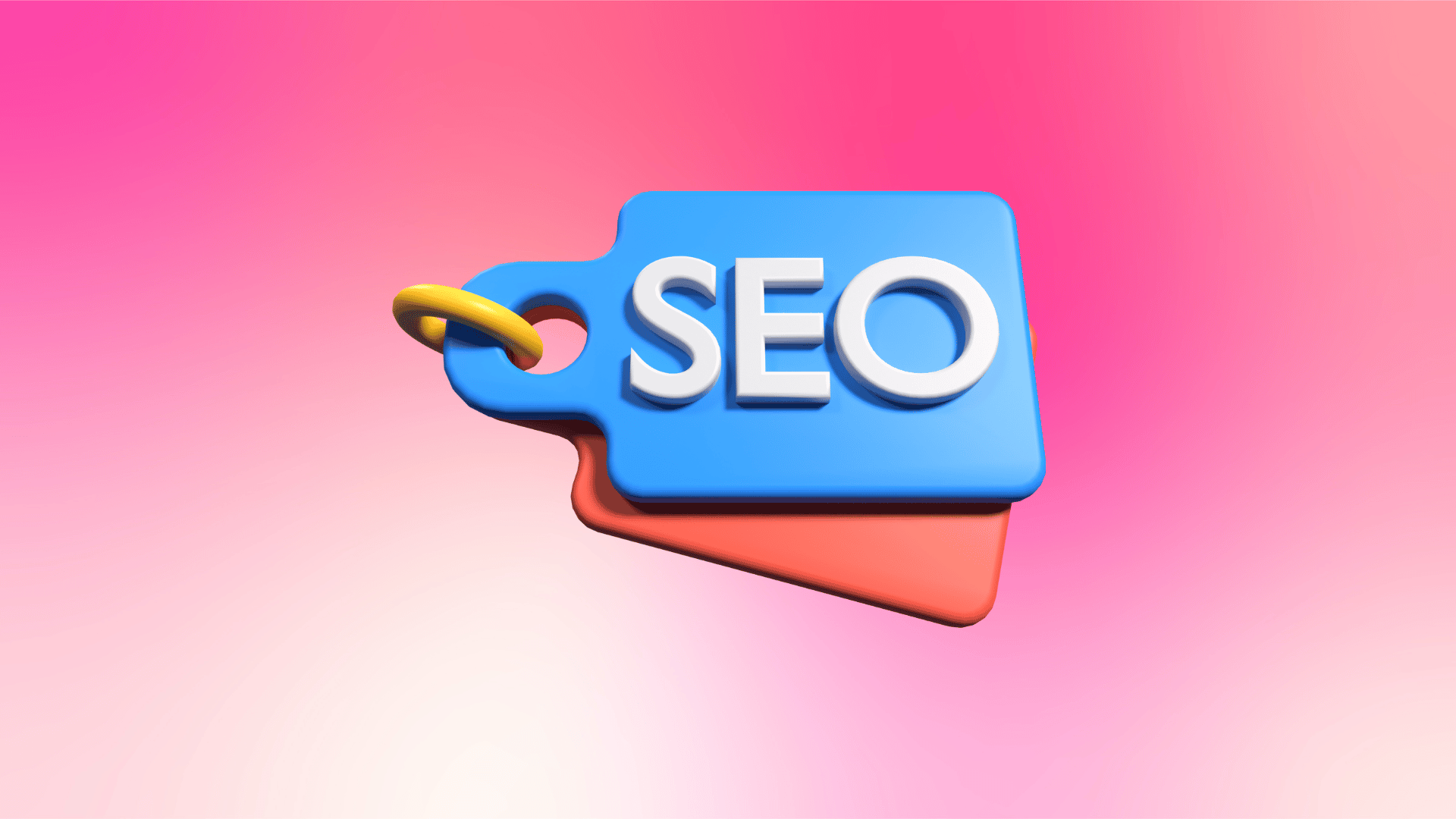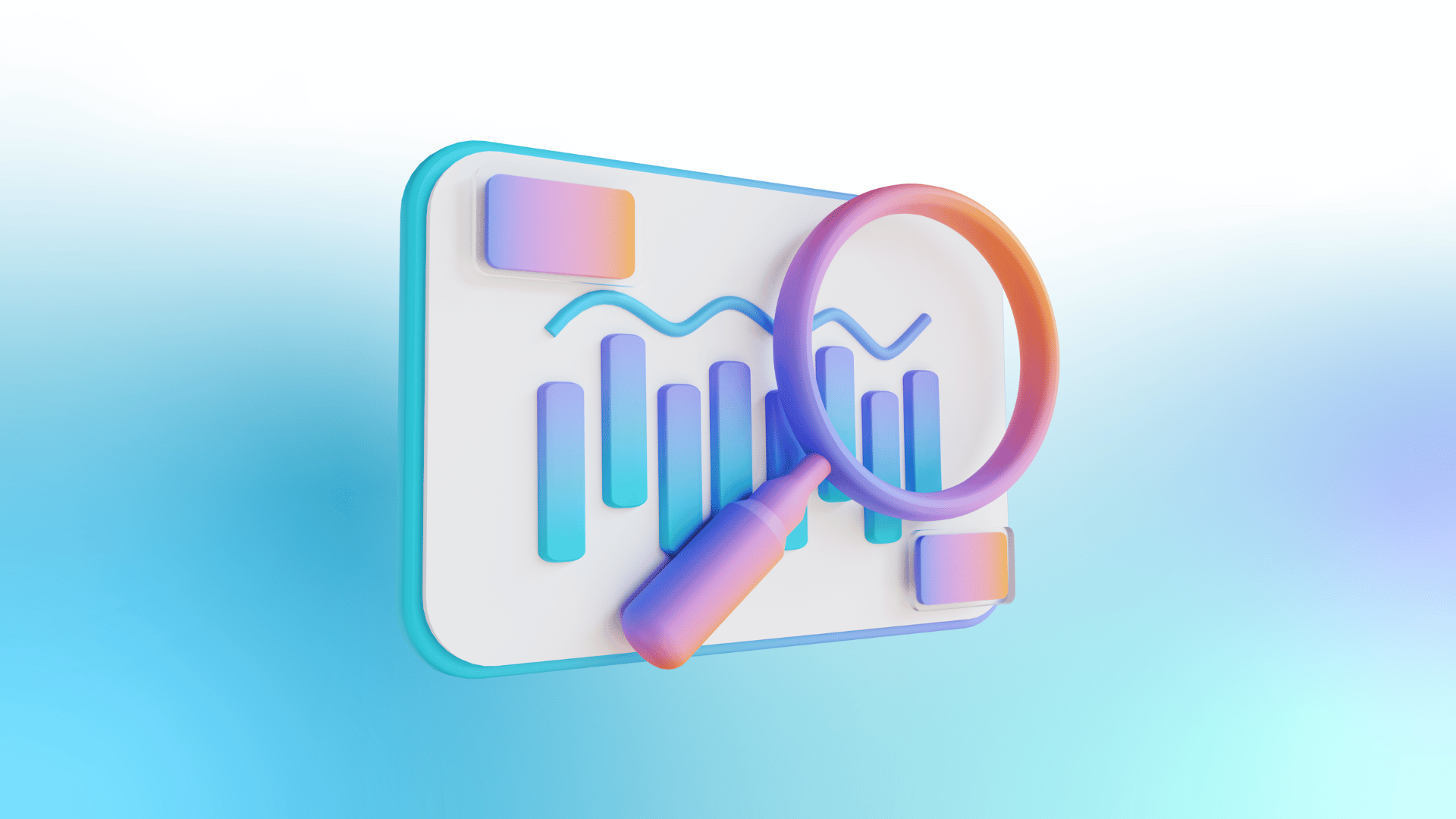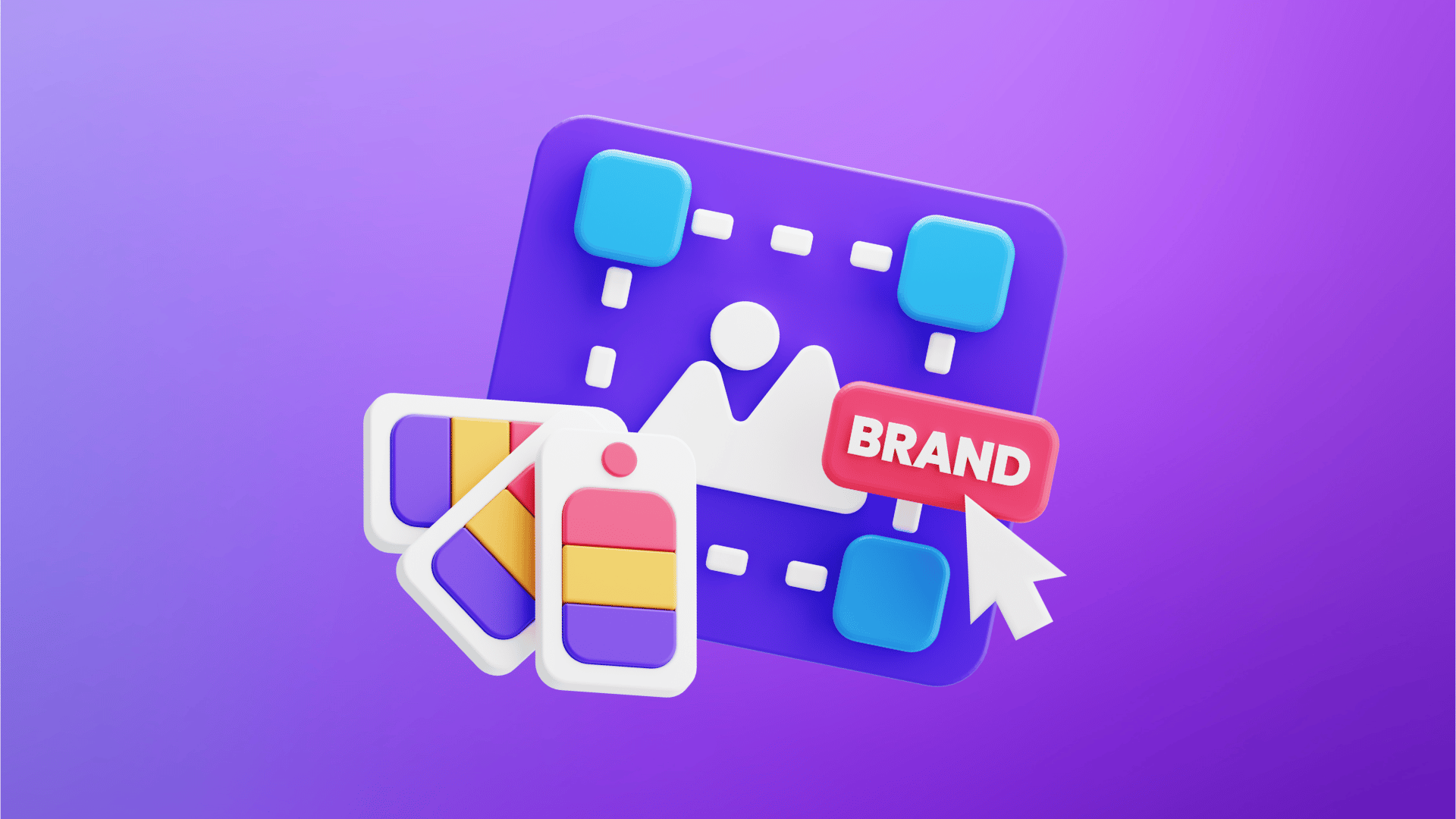SEO professionals often struggle to choose between two giants in the industry – Semrush and Ahrefs. These tools have grown by a lot since they first launched. Semrush started in 2008 and now offers more than 50 features for online visibility. Ahrefs began in 2010 as a simple backlink analyser and grew into a complete SEO suite.
These platforms differ in several important ways. Semrush’s database is massive with 22.3 billion keywords and 43 trillion backlinks. Ahrefs has 7 billion keywords and 30.6 trillion backlinks. Ahrefs stands out with its backlink analysis capabilities and user-friendly design that many prefer. The price points also set them apart. You can get started with Semrush at $139.95 USD, while Ahrefs costs $99 USD. Semrush updates keyword rankings daily and gives you a 7-day free trial. Ahrefs updates weekly and doesn’t offer trial periods.
Your choice between these tools really depends on your business needs and budget.
Some teams manage multiple SEO campaigns across multiple marketing channels – while others may just focus on a strong backlink strategy and competitor analysis… and this will impact your choice of platform.
This detailed comparison will get into their capabilities in keyword research, backlink analysis, and technical SEO. You’ll learn which platform might be the best fit for your investment.
Semrush vs. Ahrefs: TLDR Summary
- Core Difference: Semrush is a broader all-in-one marketing suite with significantly larger keyword (22.3B vs 7B) and backlink (43T vs 30.6T) databases. Ahrefs is often seen as more focused on core SEO, particularly strong in backlink analysis with a more user-friendly interface.
- Keyword Research: Semrush generally offers more accurate search volume data due to its larger database and includes strong PPC research tools. Ahrefs has unique metrics like “Clicks Per Search” and a “Parent Topic” approach for keyword grouping.
- Backlink Analysis: Ahrefs is highly regarded for its interface and excels at broken link building. Semrush has a larger index (finding more links) and features unique toxic link detection.
- Technical SEO: Both are strong. Semrush offers Log File Analysis. Ahrefs has a unique Structure Explorer to visualize site architecture.
- Rank Tracking: Semrush provides daily updates on all plans. Ahrefs offers weekly updates standard (daily costs extra).
- Pricing: Ahrefs starts cheaper ($99/mo) but uses a credit system that can add up. Semrush starts higher ($139.95/mo) but often offers more features and higher usage limits per tier. Semrush has a 7-day free trial; Ahrefs does not.
- Usability: Ahrefs is generally considered easier for beginners. Semrush has a steeper learning curve due to its vast features.
- Unique Strengths: Semrush excels with integrated PPC & Social Media tools, daily tracking, and toxic link detection. Ahrefs shines with its UI/UX, broken link building features, and Content Explorer tool.
Who should choose which?
- Choose Semrush if: You need an all-around marketing toolkit (SEO, PPC, Social), value larger datasets, require daily rank tracking, manage multiple campaigns/clients, or need advanced features like toxic link audits.
- Choose Ahrefs if: Your primary focus is core SEO (especially backlinks), you prioritise ease of use, need strong broken link building tools, or have a tighter starting budget (but watch the credits).
Keyword Research Capabilities
Good keyword research is the foundation of any successful SEO strategy. Semrush and Ahrefs both have powerful keyword research features, but they work differently. Let’s get into how these tools stack up when you need to find and analyze keywords that bring traffic to your website.
Search Volume Accuracy: Semrush vs Ahrefs
The size of a keyword database affects search volume accuracy. Semrush’s keyword database is much bigger with 25.3 billion keywords, while Ahrefs has 9.5 billion. This is a big deal as it means that Semrush’s database is 2.6 times larger, giving it better keyword coverage.
A newer study, published in 2022, compared search volume accuracy among SEO tools. Semrush’s search volume numbers were most accurate 32.39% of the time. This beat Google’s Keyword Planner at 26.35% and other competitors. Ahrefs came in with a 20.51% accuracy rate in the same study.
Both platforms update their search volume data monthly to stay current with changing search trends. Keep in mind that all search volume data shows estimates, not exact numbers.
Keyword Suggestions and Clustering
Each platform takes its own approach to keyword suggestion and clustering:
Semrush’s Keyword Magic Tool arranges keywords based on common modifiers, which creates lexical groups instead of semantic clusters. The tool shows related search terms with modifiers like numbers or brands linked to your main keyword. The platform added AI-powered features that create topic clusters with pillar pages and subtopics automatically, which makes content planning easier.
Ahrefs uses a mixed approach that combines SERP analysis and semantic relationships. Their Keyword Explorer groups keywords by “Parent Topic” to find broader categories for keywords. This helps users see content hierarchies and topic relationships more clearly.
Search Intent and Traffic Potential
These platforms differ in how they handle user intent behind searches:
Semrush labels keywords by search intent (informational, navigational, commercial, or transactional). This helps create content that matches what users want. Their “Keywords by Intent” report shows a website’s content strategy based on how their ranking keywords are distributed by intent.
Ahrefs doesn’t label keywords by intent directly. Instead, it offers a “Traffic Potential” metric that shows possible traffic from a keyword and its variations. Ahrefs also shows metrics that Semrush doesn’t have, like clicks, clicks per search (CPS), and return rate—which shows how often users look up the same keyword within 30 days.
PPC Data Integration in Semrush
Semrush really stands out from Ahrefs when it comes to PPC research:
Semrush has specific PPC keyword research tools to make paid advertising campaigns better. Their PPC Keyword Tool helps organize keywords for campaigns and ad groups, set negative keywords, find local volume and CPC data, and build keyword lists.
On top of that, Semrush’s competitive PPC analysis features let users understand their competitors’ ad strategies and find opportunities. Having SEO and PPC data in one place makes Semrush valuable for marketers who handle both organic and paid search.
Ahrefs focuses mainly on organic search data with limited PPC features. This gives Semrush an edge for businesses that run Google Ads campaigns along with SEO.
For pricing, Semrush’s Pro plan costs $139.95 USD and includes these keyword research features. You’ll need higher-tier plans for some advanced features like historical data. Ahrefs starts cheaper at $99 USD for their Lite plan but offers fewer features.
Backlink Analysis and Link Building
Backlink analysis is a vital part of SEO strategy. Quality links signal authority to search engines. Semrush and Ahrefs have both put a lot of resources into their backlink tracking features. Each platform offers different strengths in this area.
Backlink Index Size: 43T vs 30.6T
A tool’s backlink database size affects its ability to find link opportunities. Semrush has built a massive backlink database of 43 trillion backlinks, which is larger than Ahrefs’ 30.6 trillion. This size difference gives Semrush users access to more detailed backlink data.
The size difference shows up in their reporting capabilities. Semrush finds more referring domains when analyzing the same websites. To cite an instance, see a case study of Backlinko.com where Semrush found 71.5K referring domains while Ahrefs found 49K. Semrush also found 2.1M total backlinks compared to Ahrefs’ 419K.
Both tools keep their databases fresh. Semrush updates every hour, and Ahrefs updates parts of its database every 15 minutes. Ahrefs completes full database updates about every two months.
Toxic Link Detection in Semrush

Semrush stands out with its toxic link detection. The Backlink Audit tool gives each backlink a Toxicity Score from 0-100 based on over 45 toxic markers. This detailed analysis helps users find harmful links that might trigger Google penalties.
The Toxicity Score groups links as:
- 0%-30%: Low Spam Score
- 31%-60%: Medium Spam Score
- 61%-100%: High Spam Score
Semrush makes link removal easier. Users can connect their email accounts in the tool and send removal requests to webmasters. If removal doesn’t work, Semrush helps create ready-to-upload files for Google’s Disavow tool.
Broken Link Building in Ahrefs
Ahrefs shines at broken link building. This strategy involves finding broken links on websites, creating new content, and offering your content as a replacement.
The dedicated Broken Links tool in Ahrefs spots non-working outbound links quickly. Users can see:
- Broken outbound links from any website
- Most linked-to dead pages
- Pages with the most backlinks that return error codes
Users can create similar content after finding these opportunities. They can then contact website owners who link to these broken resources and suggest their content instead. This feature makes Ahrefs valuable for link building campaigns.
Anchor Text and Link Type Insights
Both tools analyze anchor text—the clickable words in a hyperlink—which matters for SEO and contextual relevance.
Ahrefs shows anchor text distribution through better visuals. This helps users spot potential over-optimization problems. The accessible interface shows text around each backlink, which explains why pages get links.
Semrush matches this anchor text analysis and adds value by detecting various link types. It identifies dofollow, nofollow, sponsored, UGC tags, and more. This helps users keep their backlink profile natural for search engines.
These backlink analysis features cost $139.95 to $499.95 USD in Semrush, while Ahrefs prices range from $99 to $999 USD.
Semrush leads in backlink database size and toxic link detection. Ahrefs offers an accessible interface with better broken link building features.
Technical SEO and Site Audits
Technical SEO builds the foundation for any website’s search performance. Your SEO efforts can fail despite perfect keyword targeting and quality backlinks if technical problems exist. Let’s get into how Semrush and Ahrefs handle the vital aspects of technical optimization.
Site Health Score and Issue Prioritization
Semrush and Ahrefs both offer complete site health scoring systems, but their approaches differ. Semrush’s Site Audit tool performs a complete website health check that looks at over 140 technical factors such as crawlability, on-page SEO, technical SEO, and mobile-friendliness. The platform breaks down issues into three levels:
- Errors (highest effect issues)
- Warnings (medium effect)
- Notices (lower priority items)
This structure helps users tackle the most important problems first.
Ahrefs Site Audit provides core site health metrics and scans for more than 170 technical and on-page SEO problems. Users can adjust importance ratings for ongoing projects as the tool segments issues by priority level.
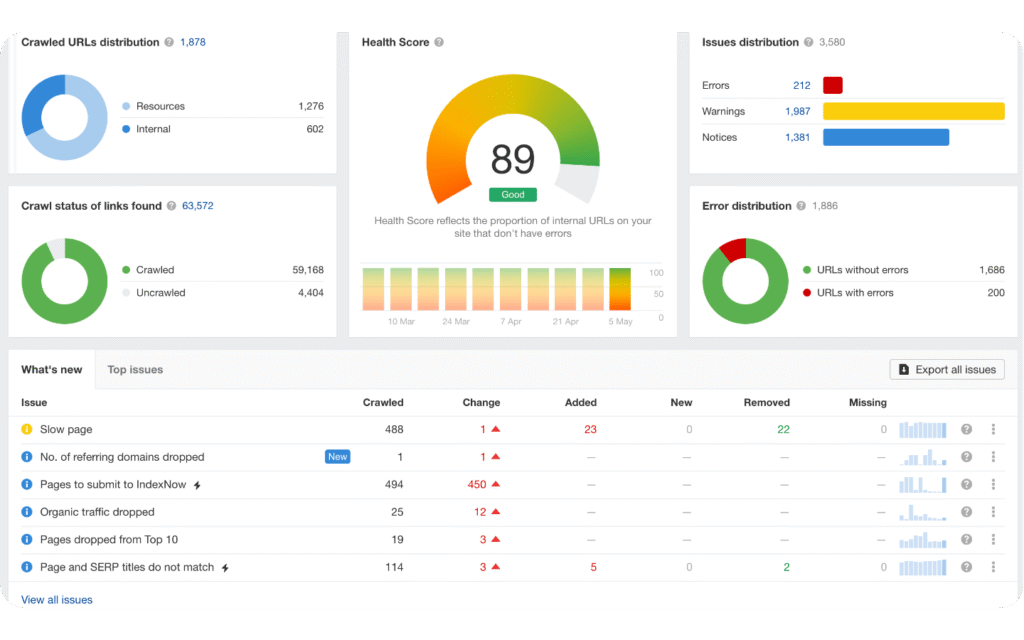
Semrush makes recommendations more practical by including a “Top Issues” list that helps users prioritize fixes with the greatest effect on site performance. When compared directly, Semrush makes technical information easier to use for decision-making.
Internal Linking Reports: Semrush vs Ahrefs
Search engines understand and rank your content based on internal linking structures. Both tools analyze internal linking but excel in different areas.
Semrush’s distinctive “internal link distribution” report shows how link authority flows through your site. The report tells you if high-authority pages pass authority to pages that need ranking boosts—this helps optimize crawl budget and page rankings.
Ahrefs has added an “Internal Link Opportunities” feature that suggests potential internal linking connections. This tool finds underperforming pages and suggests specific linking opportunities to improve authority distribution, focusing on pages that need more visibility.
Log File Analysis in Semrush
Semrush’s dedicated Log File Analyzer gives it a major technical edge over Ahrefs. This tool lets users upload server log files to:
- Track Googlebot activity over time
- Identify crawl frequency patterns
- Analyze HTTP status code distributions
- Determine search engines’ file type priorities
- Find inconsistent status codes that might indicate configuration problems
Log file analysis shows exactly how search engines interact with your site, which helps diagnose crawl issues and optimize crawl budget allocation.
Structure Explorer in Ahrefs
Ahrefs offers its unique Structure Explorer feature that shows website architecture without a full crawl. The tool maps your site’s hierarchy by showing URL distribution by category and depth.
Structure Explorer helps users grasp website architecture by:
- Showing URL numbers by depth (clicks from homepage)
- Creating visual content hierarchy trees
- Displaying folder-level metrics including traffic and backlinks
Large websites with complex structures benefit from this feature as it helps find sections buried too deep in the site architecture.
Semrush plans cost between $139.95 and $499.95 USD, with technical SEO features in all tiers. Ahrefs starts at $99 USD for the Lite plan, but you’ll need higher-tier subscriptions for some advanced technical features.
Rank Tracking and SERP Monitoring
You need to watch your site’s search performance constantly. Robust rank monitoring tools are vital for this task. The way these tools track rankings shows another major difference between Semrush and Ahrefs.
Update Frequency: Daily vs Weekly
The timing of ranking updates affects how quickly you can react to algorithm changes or competitor moves. Semrush updates rankings daily on all pricing plans, which lets you take immediate action when positions change. This becomes valuable especially when rankings are unstable or after you make website changes.
In stark comparison to this, Ahrefs gives weekly updates on standard plans. Users need to buy the “Project Boost” add-on at $100 USD monthly to get daily ranking data. This makes Semrush an affordable choice for users who need frequent ranking updates.
Semrush lets you track up to 8 keywords without charge on its basic plan. Ahrefs doesn’t have such a starter option right now.
Visibility Score and SERP Features
Both platforms measure overall search visibility using different methods. Visibility scores help you calculate your site’s presence in search results beyond rankings.
Semrush determines visibility based on keyword rankings and search volumes. The platform shows your prominence for tracked keywords. You also get detailed SERP feature tracking that shows when your site appears in featured snippets, knowledge panels, image packs, or the newer AI Overviews.
Ahrefs has its own visibility metrics, including a unique “Share of Voice” measurement. Users often say that Semrush gives a more detailed SERP feature analysis.
SERP features matter more now as Google shows more rich results. Only 1.53% of search results appear without SERP features at the time of October 2024. Tracking these elements is no longer optional.
Multi-Device and Multi-Location Tracking
Rankings change based on device type and user location in today’s scattered search world. Detailed tracking across these variables is significant.
Semrush’s Position Tracking tool stands out with multi-targeting features. You can track across devices (desktop, phone, tablet), locations (down to postal code level), and search engines (Google, Bing, Baidu, and ChatGPT). These features come with Guru ($382.17 USD monthly) or Business ($764.42 USD monthly) subscriptions.
This gives you detailed information about ranking variations across locations. Businesses serving multiple geographic markets or focusing on local SEO find this particularly useful.
In stark comparison to this, Ahrefs supports location and device-based tracking but offers fewer filtering options than Semrush’s multi-targeting system.
Pricing and Value for Money (USD)
The price-to-feature ratio plays a vital role in choosing between Semrush and Ahrefs since SEO tools are a big investment. Let’s get into what each platform offers for your money.
Semrush Pricing Tiers: $139.95 to $499.95
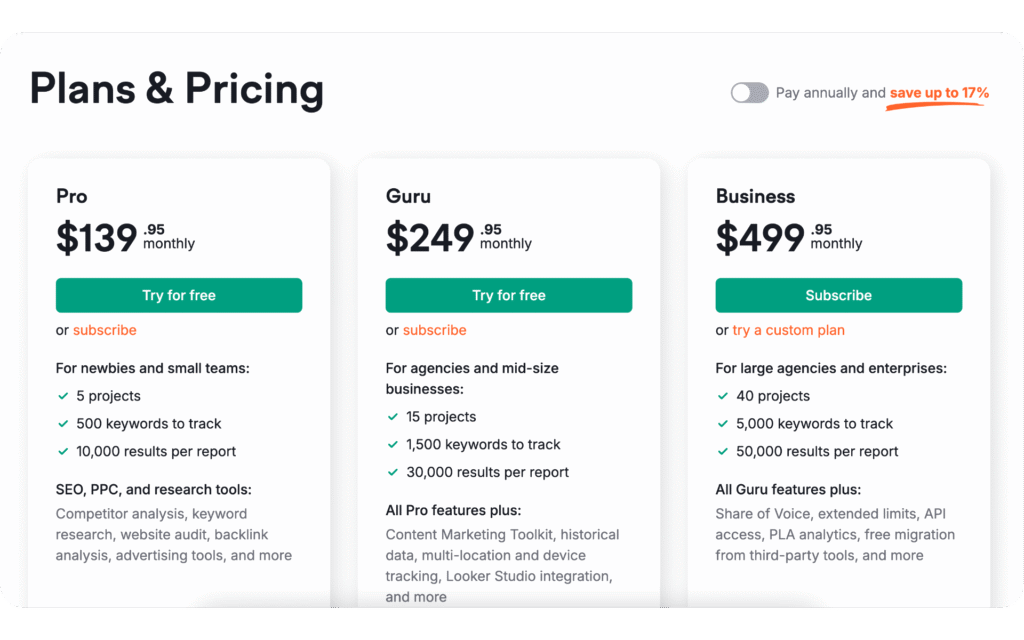
Semrush has three subscription tiers with clear pricing:
- Pro: $139.95/month — Perfect for freelancers and startups with 5 projects and 500 tracked keywords
- Guru: $249.95/month — Great for growing businesses with 15 projects and 1,500 tracked keywords
- Business: $499.95/month — Built for agencies managing 40 projects and 5,000 tracked keywords
The limits get better with each plan. Pro users can create 3,000 reports daily with 10,000 results per report. Guru users get 5,000 reports with 30,000 results, while Business users receive 10,000 daily reports with 50,000 results per report. Adding users costs between $45-$100 monthly based on your plan.
Ahrefs Cost and Credit-Based Model

Ahrefs’ pricing looks like this:
- Lite: $99/month — 5 projects and 750 tracked keywords
- Standard: $199/month — 20 projects and 2,000 tracked keywords
- Advanced: $399/month — 50 projects and 5,000 tracked keywords
Ahrefs uses credits for lower-tier plans. The Lite plan comes with 500 monthly credits, and each report uses one credit. Users need to buy more credits at $50 per 500 when they run out. This is a big deal as it means that heavy users might pay more than expected.
Semrush vs Ahrefs Pricing: Which Offers More?
Most SEO professionals call Semrush the better value despite its higher starting price. Semrush gives you 3,000 daily reports while Ahrefs limits you to 750 monthly credits on similar plans.
Semrush’s platform has complete marketing features beyond SEO, with strong PPC tools that you won’t find in Ahrefs. Companies running both SEO and PPC campaigns get more value without buying extra tools.
Free Trial Availability and Limitations
You can try Semrush Pro or Guru plans free for 7 days without entering bank details. They also have a free account option that lets you make 10 daily requests, manage 1 project, and track 10 keywords.
Ahrefs doesn’t offer traditional free trials anymore. Website owners can access basic Site Explorer and Site Audit features through Ahrefs Webmaster Tools, but they can’t use essential tools like Keyword Explorer.
The free options from Semrush are a great way to get familiar with the platform before spending money.
Support, Usability, and Unique Features
The right SEO platform depends on more than just core features. Support quality, accessible interface, and unique capabilities play a crucial role in finding the perfect fit for your company’s workflow. Here’s what you need to know about Semrush and Ahrefs.
Customer Support Channels and Response Time
Quality support makes a huge difference when you work with complex SEO tools. Ahrefs shines with quick responses through live chat and email – users usually get answers within 3-5 minutes. The platform offers live support 24 hours a day on weekdays, so you can get help whatever your time zone.
Semrush keeps pace by offering support through email, live chat, and phone. The platform runs seven days a week, though with shorter hours than Ahrefs. Both tools have rich knowledge bases that feature blog posts, tutorials, and videos to help you master their features on your own.
User Interface and Learning Curve
New users tend to prefer Ahrefs because of its clean, accessible interface. Many industry experts say Ahrefs feels more streamlined and direct, which makes it perfect for SEO beginners. Users can find what they need quickly without endless clicking through menus.
Semrush takes more time to master because it packs so many features. The sheer amount of data and tools might overwhelm you at first. One user put it well: “Even though I have been using Semrush for years, I still find myself getting lost at times”.
Semrush Copilot vs Ahrefs Content Explorer
Semrush’s new Copilot feature uses AI to boost your workflow. This smart assistant reads report data and suggests useful fixes – it alerts you about traffic drops, lost backlinks, and urgent updates. The tool ranks suggestions by their potential effect, which saves hours of analysis time.
Ahrefs fights back with Content Explorer, which works like BuzzSumo to help you find winning content online. The tool searches through 13.6 billion pages to spot content with strong backlinks and social engagement.
Social Media and PPC Tools in Semrush
Semrush stands out with its marketing tools beyond SEO. The platform offers detailed paid advertising features, including keyword research, competitor analysis, and ad copy creation. You also get social media tools to schedule posts, check performance, and track what competitors do on social platforms.
Ahrefs excels at SEO but offers basic PPC and social media features. Companies running marketing campaigns across multiple channels might prefer Semrush’s complete package, priced between $139.95-$499.95 USD. This could save you from buying extra tools.
Comparison Table
| Feature | Semrush | Ahrefs |
|---|---|---|
| Database Size | ||
| Keywords | 22.3 billion | 7 billion |
| Backlinks | 43 trillion | 30.6 trillion |
| Keyword Research | ||
| Search Volume Accuracy | 32.39% | 20.51% |
| Keyword Organization | Keyword Magic Tool with lexical grouping | Parent Topic approach with semantic relationships |
| Search Intent Classification | Explicit categorization | Indirect (via Traffic Potential) |
| Pricing (USD) | ||
| Starting Plan | $139.95/month (Pro) | $99/month (Lite) |
| Mid-tier Plan | $249.95/month (Guru) | $199/month (Standard) |
| Advanced Plan | $499.95/month (Business) | $399/month (Advanced) |
| Technical Features | ||
| Site Audit Checks | 140+ technical factors | 170+ technical factors |
| Log File Analysis | Yes | No |
| Structure Explorer | No | Yes |
| Updates & Monitoring | ||
| Rank Tracking Updates | Daily (all plans) | Weekly (standard plans) |
| Backlink Updates | Every hour | Every 15 minutes (partial) |
| Unique Features | ||
| Free Trial | 7-day trial available | No free trial |
| PPC Tools | Complete PPC features | Limited PPC features |
| Support Availability | 7 days/week | 24/5 support |
| Interface Learning Curve | Steeper learning curve | Easy-to-use |
Conclusion
We really compared these two SEO titans, and choosing between Semrush and Ahrefs comes down to your business needs and budget. Ahrefs has a user-friendly interface with excellent backlink analysis at $99 USD. Semrush provides substantially more complete features across marketing channels. Semrush’s larger database – 22.3 billion keywords and 43 trillion backlinks compared to Ahrefs’ 7 billion keywords and 30.6 trillion backlinks – makes a big difference in real-life applications.
Semrush’s higher price tag of $139.95-$499.95 USD makes sense for larger businesses with varied marketing needs. It offers extensive PPC tools, social media features, and daily rank tracking updates. It also provides a 7-day free trial that lets you test everything before buying – something Ahrefs doesn’t offer anymore.
Smaller businesses and SEO specialists who focus on backlink building might prefer Ahrefs’ straightforward approach and lower cost. Teams with limited SEO experience will find its broken link building features and clean interface easier to learn.
Both tools are substantial investments that should line up with your strategy. Freelancers and startups often go for Ahrefs’ Lite plan at $99 USD monthly. Agencies handling multiple clients get more value from Semrush’s Business plan at $499.95 USD, even with the higher price tag. Your final choice should factor in your specific SEO challenges and the marketing channels you handle.
Whatever platform you pick, Semrush and Ahrefs have become industry leaders through constant breakthroughs and powerful features that boost your search visibility when you employ them correctly.
FAQs
Q1. Which tool is better for keyword research, Semrush or Ahrefs? Both tools excel in keyword research, but Semrush offers a larger keyword database and more accurate search volume data. Semrush is ideal for comprehensive keyword analysis, while Ahrefs provides unique metrics like clicks per search.
Q2. How do the backlink analysis capabilities of Semrush and Ahrefs compare? Ahrefs is generally considered superior for backlink analysis due to its user-friendly interface and extensive backlink database. However, Semrush offers unique features like toxic link detection and a larger overall backlink index.
Q3. What are the main differences in pricing between Semrush and Ahrefs? Semrush’s plans range from $139.95 to $499.95 per month, while Ahrefs starts at $99 per month. Semrush offers more features at each tier, but Ahrefs provides a more affordable entry point for smaller businesses or individual users.
Q4. Which tool is easier to use for beginners? Ahrefs is generally considered more user-friendly with a cleaner, more intuitive interface. Semrush has a steeper learning curve due to its more comprehensive feature set, but offers more advanced capabilities for experienced users.
Q5. Can Semrush and Ahrefs be used together effectively? Yes, many SEO professionals use both tools to leverage their unique strengths. Semrush excels in comprehensive marketing analysis, including PPC and social media, while Ahrefs is preferred for in-depth backlink analysis and link-building strategies.
Author
-

Managing Director of one of Australia's leading Digital Marketing Agencies... With over 7+ years of hands on experience in SEO, managing both national & international organisations SEO strategy and campaign distribution. Having won several international awards (Search Awards, Clutch, TechBehemoth etc.) for both paid media and search campaign success... He is a front runner in leading search and defining the playbook for the Australian market.
View all posts
